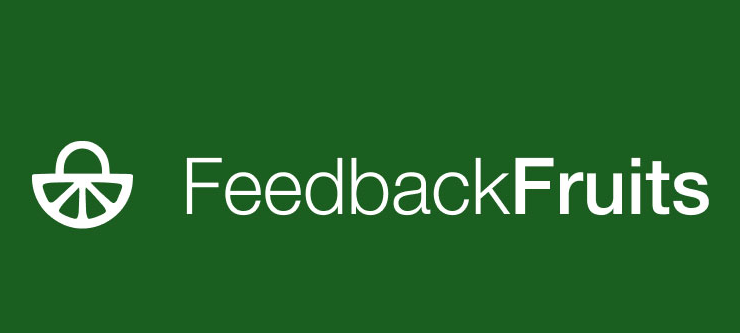
How do you maximize peer review for students?
“How can I give feedback, I’m not the expert, am I?”
Peer reviewing or peer feedback: a process that often takes place in academia as well as in education. Peer review assignments are certainly not new in education; many teachers have been using this activity for many years. What is new, however, is the focus on the process around giving and processing the feedback. Research shows that we do not always fully utilize the learning benefits of peer feedback assignments (Winstone & Carless, 2019). So how can you design these assignments more effectively and efficiently? The TLC FGw has delved into the literature for you to provide the most important advice.
Why peerfeedback?
In scientific literature the term peer reviewing is used, in educational research it is more often referred to as peer feedback. They both mean the same thing, so in this article we choose to use peer feedback. Peer feedback can be very rewarding, for the recipient but even more so for the one giving the feedback. Students get a better grip on the success criteria of an assignment, adopt the reader’s perspective, learn how to formulate AND receive feedback, feel involved, etc. In short, peer feedback spurs deep learning in which students think critically, make connections and create new concepts.
Resources
Poot, R. (2018). Diep leren door online peerfeedback. Geraadpleegd op: Diep leren door online peer feedback | SURF.nl
SURF (z.d.) Peerfeedbackcyclus in 8 stappen. Geraadpleegd op: surf.nl
Van Popta, E., Kral, M., Camp, G., Martens, R. L., & Simons, P. R. J. (2017). Exploring the value of peer feedback in online learning for the provider. Educational Research Review, 20, 24-34.
Winstone, N., & Carless, D. (2019). Designing effective feedback processes in higher education: A learning-focused approach. Routledge.
Winstone, N. E., & Nash, R. A. (2016). The Developing Engagement with Feedback Toolkit (DEFT). Geraadpleegd op: HEA – report
Get the most out of peer feedback
Yet, by no means all of the mentioned benefits are always achieved because some parts of the peer feedback process often receive less attention. What does it take to get the most out of the peer feedback process? Researchers have developed the peer feedback cycle as an answer to this question, see images below (SURF, s.d.; Van Popta et al., 2017). You can also show this cycle to students: this way it is clear to them why and when a step takes place.
In onderstaande alinea lichten we de stappen uit deze cyclus toe.
1.Objective
What are the goals of the assignment?
Goals & assessment.
Is it necessary for students to provide feedback on the entire text? It often takes junior students more time to give feedback.
Do you want students to give feedback in pairs or triplets? In triplets, each student gives feedback to two others. This avoids the problem of duping the receiver when the feedback giver is less motivated. It can also give students a little more confidence: ‘at least then I’m not the only one looking at it’.
How will you assess the peer feedback assignment? It can motivate students to assess part of the assignment. This can, of course, be an additional test for whether they submit the feedback. You can also choose other elements, such as:
- assess the work plan (see step 7);
- asking students to send in their best-worded feedback comment and assessing it;
- assess the students’ self-formulated learning objectives for the next assignment (see step 8).
2. Instruction
How do you teach students how to formulate feedback?
The structure of feedback & feedback levels
Giving peer feedback
Researchers recommend giving students explicit instruction on this. Van Popta and colleagues (2017) describe four steps that a feedback comment should meet in order for the most to be learned by giver and receiver:
1. Judgement. Specific and concrete, from an “I” perspective.
“I find this paragraph unclear”.
2. Substantation. Arguments to support the opinion.
“Because you mention four different arguments, but give little explanation.”
3. Suggestions for improvement. Suggestions in the form of questions are more effective than mere advice.
“Why are these four arguments so important to your essay? Can you substantiate all of them better?”
4. Reference to literature.
If necessary, a student may provide a reference to another source.
Be aware that first- and second-year students already find the first two steps very complex. So, start with this and slowly build up to step 3 and eventually step 4. Adjust your expectations accordingly: you can certainly expect master’s students to offer suggestions and share references.
Levels of feedback
Here are several levels at which you can give feedback. Students tend to give a lot of feedback at the most detailed level such as grammar and references. It is obviously more difficult to give feedback at the main level, but this actually encourages deeper learning and is helpful to the recipient. Roughly speaking, you can give feedback on a text at three levels:
1. Main-level structure:
a. Is the main thread clear? Does it match the main question?
b. Is the structure and order of topics logical?
2.Structure at a more detailed level: introduction, paragraphs, conclusion and discussion
a. Is the content of paragraphs clear?
b. Is the support for the arguments good?
3.Other: style, grammar, references, title
Make room for the affective side
There are many emotions involved in giving and receiving feedback. You probably recognise the comments from students: “How can I give feedback, I’m not the expert, am I?” or, “how do I know if the feedback I’m getting from my peer is good, he’s not a teacher, is he?”. It helps to make space for this conversation, so you can explain to students: by giving feedback precisely on a peer’s assignment, you get a better grip on the success criteria. Because students receive feedback from a fellow student, they will process it much more critically, which is exactly what they end up learning a lot from.
Tip
- Students tend to think more carefully about constructing critical than positive comments. But students learn just as much from positive feedback as from negative feedback, if worded properly.
3. Criteria
Based on what criteria do students provide feedback?
Teacher-driven versus student-driven criteria
Teacher-driven criteria
When you use teacher-driven criteria, you use the criteria that you as a teacher find most important. For this you can use the assessment criteria of the assignment. If in the peer feedback assignment, you want to focus on an element within the assessment criteria you can formulate additional criteria for this.
Are you curious about what questions/criteria you can focus on in a peer review assignment? Our colleague Wilma Miljaars developed this peer feedback form with Fransisca Jungslager for their book Kritisch denken & schrijven (2016).
Student-driven criteria
This involves having students formulate their own success criteria for an assignment, whether it is a vlog, essay or research proposal. An effective strategy is to have students work with anonymised examples. Divide the students into groups and give each group a strong and weaker example, based on these examples they formulate the success criteria.
4. Giving feedback
In what ways do students give each other feedback?
Available tools
Tool
There are currently two tools available within the UvA: Canvas Peer Review and Feedbackfruits Peer Review. Our preference is Feedbackfruits:, there are more options and students and faculty find this tool more user-friendly to work with. Within Feedbackfruits, you can also have students provide feedback on audio and/or video recordings.
5. Receiving feedback
How do you teach students to analyse feedback effectively?
Different levels
You can support students in analysing feedback comments. Encourage students to look at main-level comments first. In fact, a pitfall is to start analysing feedback at the detail level. The second step is to examine subjectivity and objectivity of the comments. Finally, it is helpful to examine how a comment relates to other comments.
6. Reflect
How do you encourage students to actively reflect on their feedback?
Appropriate methods
Feedback dialogue
A method that particularly increases the effectiveness of feedback is the feedback dialogue. In this form of work there is purposeful discussion of the feedback received, this can take place between students or student and teacher. Within the peer feedback cycle, this will be between feedback givers and receivers. Encourage feedback recipients to analyse their feedback for this conversation, for example, by preparing the following questions:
1. Ask your provider of feedback for clarification; be critical and sharp in your questions.
2. What exactly do you want to hear from your feedback provider?
These conversations can also take place outside of lectures as homework assignments.
7. Processing
How do you encourage students to process feedback in a structured way?
Appropriate methods
Encourage to work
It helps to encourage students to make an action plan immediately after the feedback dialogue: which elements will they tackle first and how? You can give this plan as a homework assignment or an assignment during a work group. In this work plan, you can again give space to the affective side of receiving feedback.
Quinton and Smallbone (2010) describe the following questions:
1. How do I feel about this feedback?
2. What thoughts do I have about this feedback?
3. Based on the feedback, what actions can I take to improve my assignment?
Reflection on processing
On the next version (or the final version), you can ask students to write a short reflection. This encourages them to think more consciously about processing feedback and the results. Consider questions such as:
- Which feedback comment did you work with and how can I as a reader recognise it in the text?
- What action did you take to process a comment?
- What was the outcome of this action? How did it enable you to develop/grow?
- What was difficult/challenging about this and why?
8. Learning objectives future
How do you encourage students to take the feedback to the next assignment as well?
Appropriate methods
Students find it challenging to take feedback received on an assignment to the next assignment. A next assignment is often slightly different. In doing so, students are not always encouraged to take this feedback with them, which is a missed opportunity.
Look to the future
- Review your comments: what did you do well? Why did you meet these criteria? What should you address in the same way on the next assignment?
- Review your observations: what do you still need to develop in? Why did your fellow student/teacher make these comments? What can you approach differently in a next assignment? What should you pay attention to? You can use this outlook as a starting point for the next assignment.







